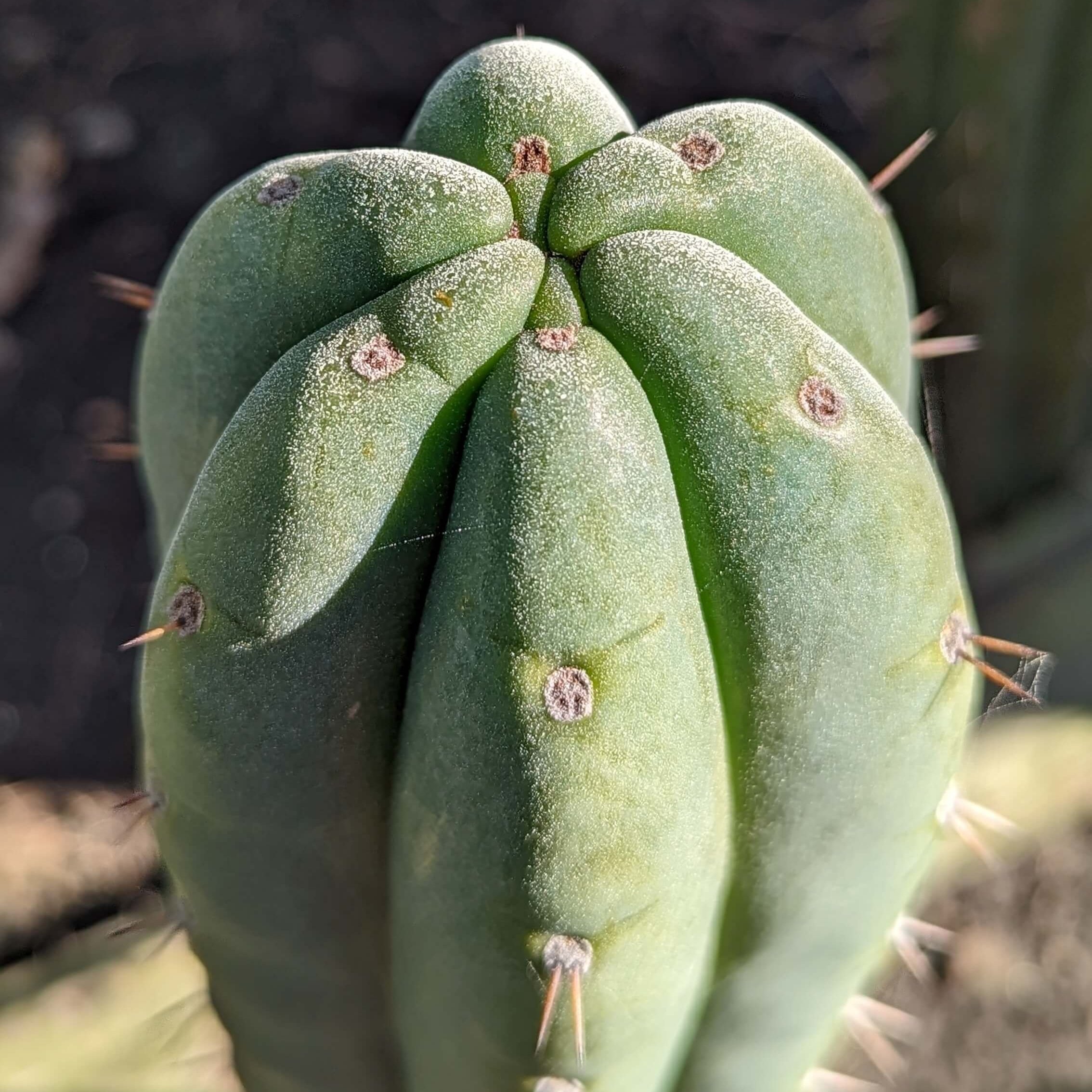 Image 1 of 3
Image 1 of 3

 Image 2 of 3
Image 2 of 3

 Image 3 of 3
Image 3 of 3




Turbinicarpus lophophoroides
Turbinicarpus lophophoroides is a curious little dwarf cactus from Mexico named after its striking resemblance to Lophophora williamsii, the Peyote cactus. Valued by collectors for its attractive, compact form and beautiful white flowers which bloom abundantly and are often larger than the cactus itself.
You will receive one seed-grown Turbinicarpus lophophoroides of flowering age. Photos 2 and 3 indicate the size of the plant you will receive, in a 50mm pot for reference. The plant will be sent bare-root.
Turbinicarpus lophophoroides is a curious little dwarf cactus from Mexico named after its striking resemblance to Lophophora williamsii, the Peyote cactus. Valued by collectors for its attractive, compact form and beautiful white flowers which bloom abundantly and are often larger than the cactus itself.
You will receive one seed-grown Turbinicarpus lophophoroides of flowering age. Photos 2 and 3 indicate the size of the plant you will receive, in a 50mm pot for reference. The plant will be sent bare-root.
Turbinicarpus lophophoroides is a curious little dwarf cactus from Mexico named after its striking resemblance to Lophophora williamsii, the Peyote cactus. Valued by collectors for its attractive, compact form and beautiful white flowers which bloom abundantly and are often larger than the cactus itself.
You will receive one seed-grown Turbinicarpus lophophoroides of flowering age. Photos 2 and 3 indicate the size of the plant you will receive, in a 50mm pot for reference. The plant will be sent bare-root.
-
Turbinicarpus lophophroides is endemic to the Mexican state of San Luis Potosi and has a natural range of about 1,700km2. Several natural populations exist, the most abundant of which occurs in semi-desert grasslands which receive seasonal flooding. The soil in this area contains high amounts of gypsum and salt, which these cacti have adapted to tolerate. Unlike other Turbinicarpi this species doesn’t grow in rocky cracks and crevices or on cliffs and slopes but is instead found on horizontal ground.
Turbinicarpus lophophroides can be found growing in close proximity to many other cacti species. The most notable of which is Ariocarpus retusus.
-
Turbinicarpus lophophoroides is easy to cultivate if it is potted in appropriate soil.
With correct soil and watering, we believe it is an extremely low-maintenance plant.
Turbinicarpus lophophoroides requires a sharp, fast-draining mineral-based substrate with only a little organic matter (90% mineral, 10% organic). It hates sitting in wet, soggy soil. Some growers add gypsum to the growing medium for these plants with great results - though we have not observed this to be necessary.
Keep in a part shade position to maintain the deep green colour. Plants that receive too much sun without being acclimatised may get sunburnt.
Water only lightly once per month when temperatures drop below 10°C. Water deeply once a week in Summer. Avoid getting water on the cactus itself, try to water around it.
Light feeds with fertiliser can be applied from late spring to early autumn. Try to source a low-nitrogen and high-potassium fertiliser. An NPK ratio of 1(N) 0.4(P) 1.5(K) is ideal. Always start with small amounts and work up to avoid fertiliser burns. Cacti will only ever require, at most, half the recommended dosage of other plants.
-
Turbinicarpus lophophoroides is a slow growing cactus. These plants are of flowering age between 2-4cm. The maximum size of these plants is around 10cm which they will reach within 10-15 years.
-
Turbinicarpus (Turb-innie-car-pus)
Turbinicarpus is a made up word combining the latin word “turbineus” which means “top” and “Karpus” which is the greek word for “fruit”.
lophophoroides (loph-off-four-roid-ee-s)
The latin suffix -oides means “likeness”. Whenever you see a species name ending in -oides you can rightly assume it is telling you that this species resembles the species or genus before the suffix. In this case, it is telling us that the species bears a close resemblance to cacti belonging to the Lophophora genus, more commonly known as the Peyote cactus.







